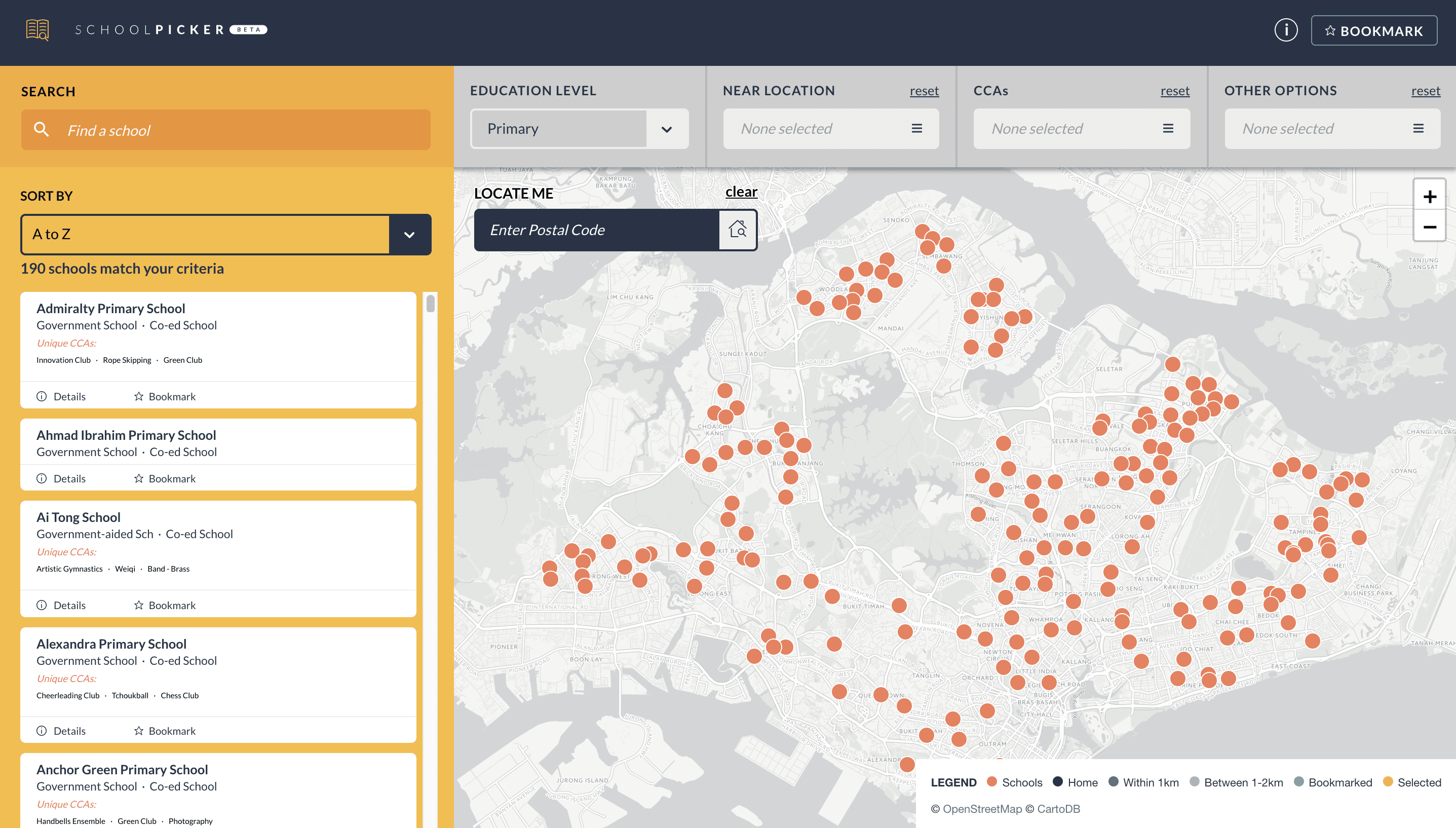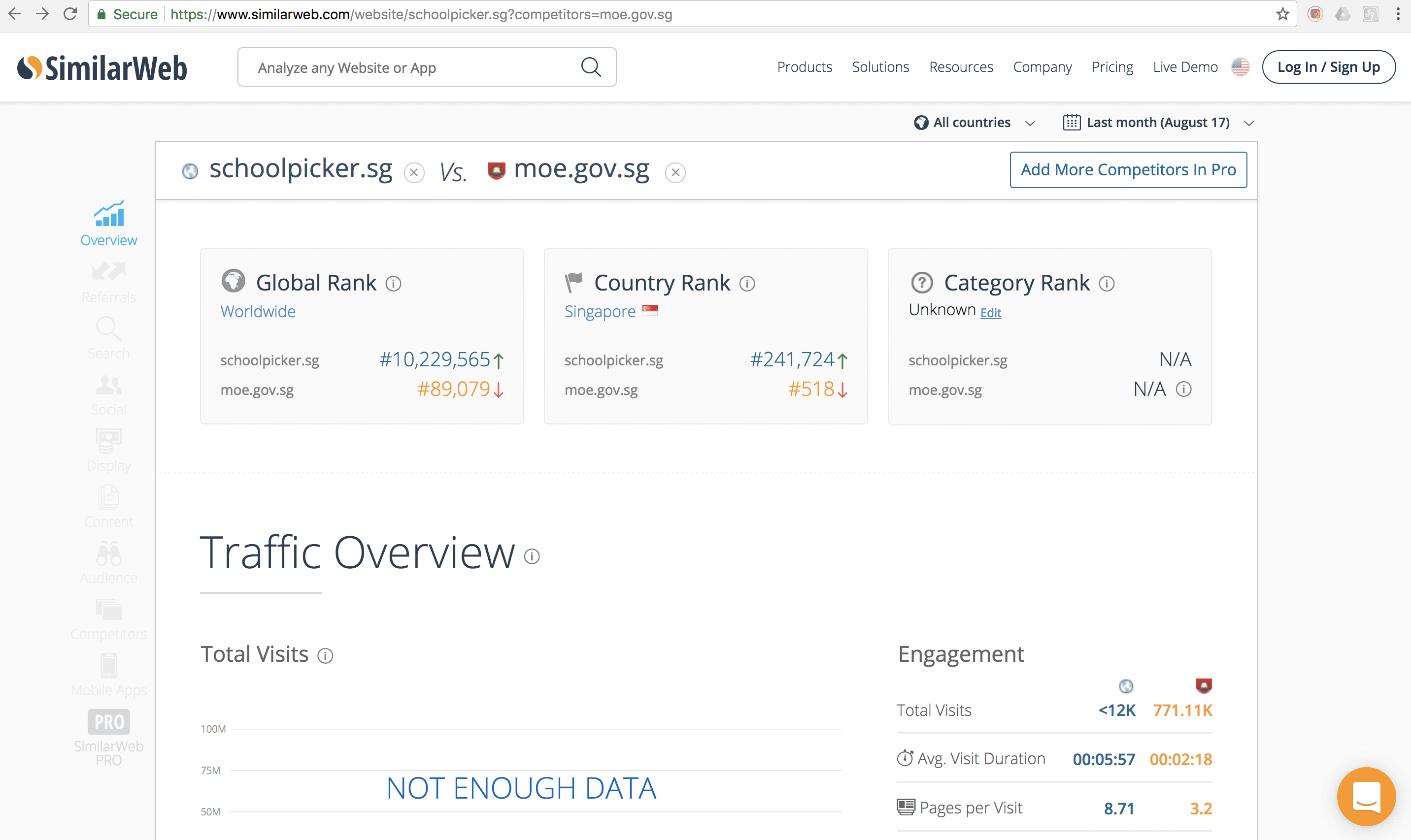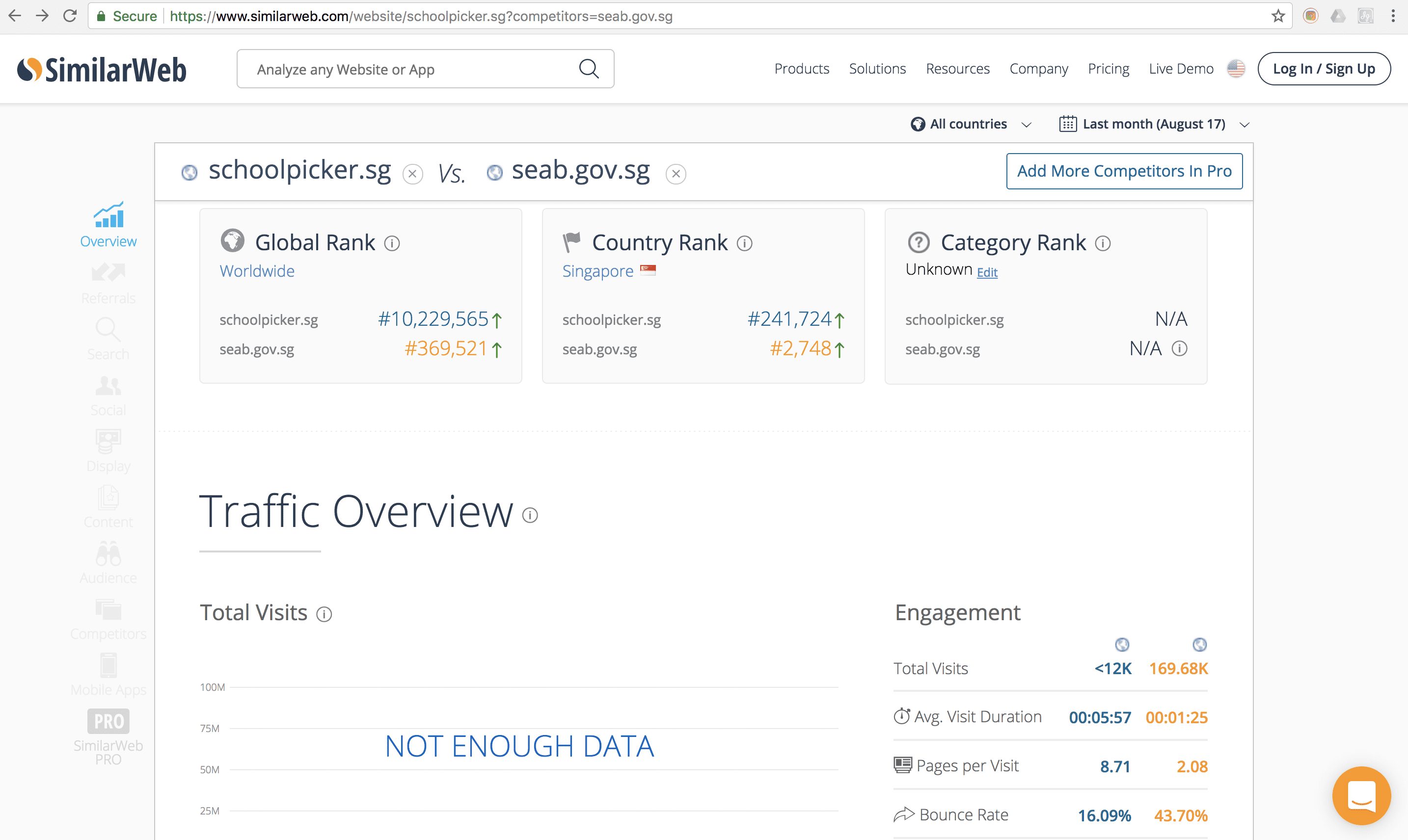

By Marcus Goh and Adrian Kuek (Joyous Learning)
The School Picker web application was launched this year in late May, with the intention to help parents and students to decide which schools to enrol in. It covers primary schools, secondary schools, and junior colleges. You can filter search results by the following information:
- CCAs provided
- types of schools
- special needs facilities
- distinctive programmes of the schools
- address/location
However, six months later, there’s one conspicuous piece of information lacking.
Cut-off points.

A good tool in theory, but not so useful for higher levels
Most secondary schools and junior colleges accept students based on their PSLE or O-Level scores. This means that even before deciding which school to go, a student needs to know which school he or she qualifies for.
Lacking this information for secondary schools and junior colleges makes it impractical to rely solely on the School Picker web app to make a decision. After all, there is no point in shortlisting schools if a student cannot qualify for any of them.
School Picker is more useful for deciding which primary schools to go to, since the Primary One Registration Exercise isn’t dependent on PSLE or O-Level scores. 40 places are reserved for Phase 2B and 2C applicants, so there is still a chance for a student to be admitted to a primary school of his or her choice.
However, the exclusion of cutoff points in the School Picker web application seems to be an intentional one, as the Ministry of Education moves towards de-emphasising academic grades in our education system.

Moving away from focusing on grades
The upcoming changes to the PSLE grading system (from a T-score to banded scores like the O-Levels), withholding PSLE top scorers’ names, and now this exclusion of cut-off points in a government created web application are all initiatives to prevent grades from being the be-all and end-all of our education system.
But even without official records, some education forums have generated an unofficial list of top PSLE scorers in primary schools by crowdsourcing such information from willing parents.
And when it comes down to selecting primary schools in the Primary One Registration Exercise, you can be sure that parents will refer to such lists to determine how strong a school is academically.
So parents might use School Picker, but they’ll probably look at other sites as well.

Difficult to separate the two issues
It’s difficult to separate the two issues when it comes to including the criteria of academic scores in School Picker.
On the one hand, it’s to prevent parents from picking schools based on academic scores. Once such information becomes public by way of this web application, it will negate all previous efforts at withholding such data.
On the other hand, there is the matter of having to let students know if they can actually qualify for the schools that prefer, since the reality is that cut-off points are how schools decide which students to admit.
Is it a good use of resources, then, to create a web application that lacks the most sought-after feature? After all, it’s likely that a similar site that includes information on academic scores on schools would see much more utilisation.
And a rough comparison with sites like SEAB (Singapore Examinations and Assessment Board) or MOE shows that School Picker sees, at best, 2% of the traffic that they do.

Verdict
The School Picker web application is best used as a supplementary resource for deciding which schools to go to. It includes a lot of information on schools, and the sorting function is perhaps the most useful aspect of the app.
But if we’re to be realistic, a large majority of parents and students are going to want to know the academic standards of the schools they are shortlisting. And this is a feature that School Picker currently does not support.
There are no easy answers to mitigating the kiasu mentality in our education system.
However, School Picker is a start.
Check out School Picker for yourself!
This article was written for and first published on Yahoo Singapore’s Grade Expectations.
Grade Expectations is a weekly feature on education in Singapore. Expect fun activities, useful tips and insightful news on learning. It’s not just about your child’s grades — it’s about raising a great child!
Adrian Kuek runs Joyous Learning, an enrichment centre that specialises in English, Mathematics, Science and Creative Writing for Primary. He previously served as the academic director of one of Singapore’s largest enrichment centre chains for over seven years. Send him an email if you’re keen!
Marcus Goh runs Write-Handed, a creative writing studio. At the same time, he teaches English at The Write Connection. He has been a specialist tutor for English and Literature (Secondary) since 2005.
Marcus is in the #GV25 Film Shorts Competition – vote for his entry, “Raffles v Utama: Dawn of Singapore”, in the link below!
https://apps.facebook.com/gv_movie_club/
(You can key in 0000000000 as your membership number if you’re not keen to take part in the lucky draw)
If you liked the article, follow me on Facebook and Instagram for more updates!
To get in touch with me, send an email!
Leave a Reply